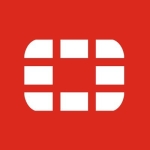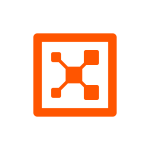We offer a full security and connectivity solution leveraging SD-WAN and SASE technologies. We partner with service integrators and providers who, in turn, sell the solution to business customers. Our solution is built on SD-WAN and SASE, facilitating the connection of offices and home users to the organization through various WAN connections. By aggregating multiple connections over the Internet, we deliver security and connectivity to meet the needs of retail and finance. We can help any vertical that needs a connection between the branch and the cloud.
We primarily secure our network using CloudGuard Network Security's next-generation firewall features, including anti-spam, IPS, and URL filtering. Our chosen package for the go-to-market strategy is NGTP. For customers seeking more features, we provide options to upgrade to the tool's advanced packages.
The product serves as a complement to our solution. While we integrate some firewall functionality into our edge device, we do not develop complete security solutions for the cloud. The combination of CloudGuard Network Security with SD-WAN connectivity allows us to offer a holistic solution.
The product needs to offer multi-tenancy.
Eight months ago, we initiated the integration with CloudGuard Network Security, and currently, we are taking it to the market and presenting it to customers. We have three customers who are on the verge of signing agreements with us.
Currently, the technical support we receive is from the US. While there is a team in the US supporting us, there is a need for this support to extend to other regions.
We got discounts on pricing.
We utilize the tool's SmartConsole integrated into our management system. However, we encounter challenges with multi-tenancy. Since we integrate it as an application on the cloud we can integrate it with any other provider. We do think that the synergy with Check Point is very good because we also allow Check Point to move from the edge to the cloud while we provide security connectivity from the edge to the cloud. So we can support its transition from on-prem security solutions to the cloud. It looks like a very good win-win situation for both Check Point and BBT, and we see it in the market, bringing us big deals in Japan and France.
We can go with others as well in terms of architecture because our architecture is very open. We are a small company and cannot engage with everyone. We have good connections with Check Point in Israel. We also have some connections abroad. So far, we are getting good support.
We have an application that is running on our cloud. Normally, our main cloud provider is Google, but we can run over any cloud. It could be a private cloud or any data center that provides virtual machines and connectivity. We are agnostic.
We are in several POCs in France, Japan, and Thailand, and they are progressing well. However, we need more presales support. There is a lack of knowledge about the solution in the regions, and we are finding it challenging to get sufficient support from those regions. There seems to be a gap in support that needs to be addressed.
It seems that the product is the answer that we need. We haven't identified any missing components in the security suite, apart from the operational challenges related to working in a multi-tenancy environment. I rate the product an eight out of ten.



















